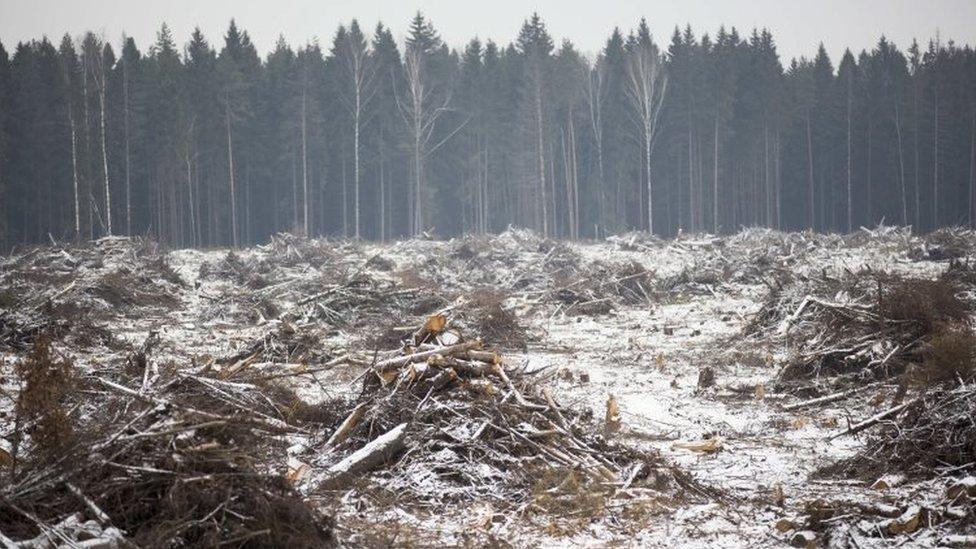COP21: Coastal impact is concern in Wales
- Published

A bus in floodwater after a storm in Newgale, Pembrokeshire - one of the at-risk coastal areas
Around 40,000 people from all over the world are in Paris for the UN climate change summit over the next two weeks.
One of the likeliest impacts of climate change in Wales is coastal erosion and an increased risk of flooding.
With over 1,300 miles (2,000km) of coastline, any sea level rise this century could be serious - especially during the type of stormy weather we've experienced in the last week.
Last year the Welsh government agreed to approve Shoreline Management Plans (SMPs).
These are long term assessments of risks associated with coastal eroding and flooding.
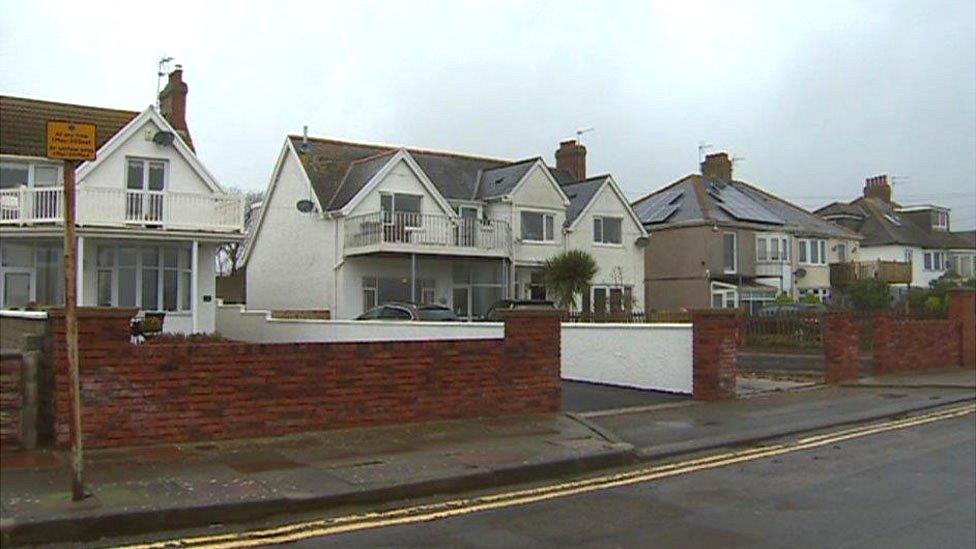
Residents in Beach Road in Newton are worried sea defences will not be repaired in a couple of decades time
Haydn Thomas and his family bought their new home on Beach Road in Newton, near Porthcawl almost three years ago.
After renovations they moved in last year, and say they had no idea about the potential threat from the sea.
But after 20 years, the sea wall near the homes will not be maintained under the shoreline plan.
Mr Thomas and other residents are frustrated at how the plan has been set out - and the complex number of organisations and authorities behind it.
"We don't understand the policy and there's confusion as to why it's triggered by time rather than if sea levels actually do rise," he said.
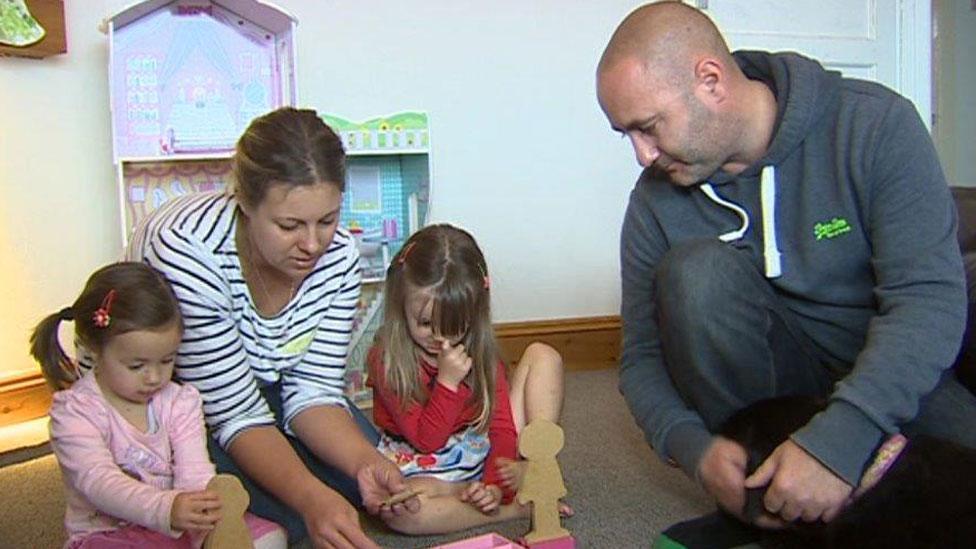
Haydn Thomas is frustrated a time limit has been set for defences - not a plan based on the height of waves
"We want to live here because of the sea, not because we're worried about it. We thought it was going to be a dream house next to the sea.
"It's not saleability now but it's the inheritance - we have two young children."
Up to 40 local properties could be affected and Mr Thomas said there was "massive concern" among residents.
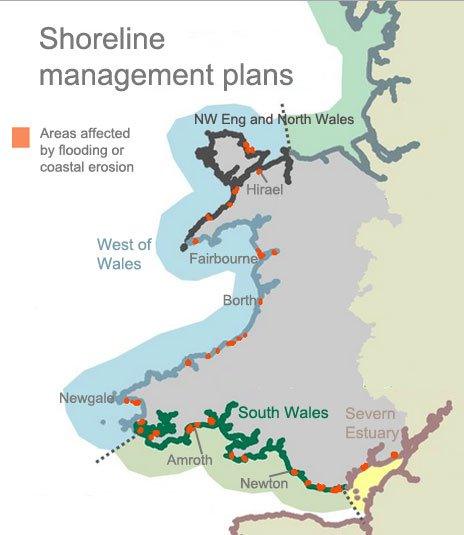
The map shows Wales covered by four shoreline management plans
Six graphics that explain climate change
Newton is one of 48 locations listed as being affected or threatened by flooding or coastal erosion across the four SMPs covering Wales.
The non-statutory documents have been produced because of the perceived threat from climate change along some of Wales' coastline.
Prof Tavi Murray, chair of glaciology in Swansea University's geography department, said the sea level rise - best predicted as being somewhere between a half and one metre in the rest of this century - would have the key impact in Wales.
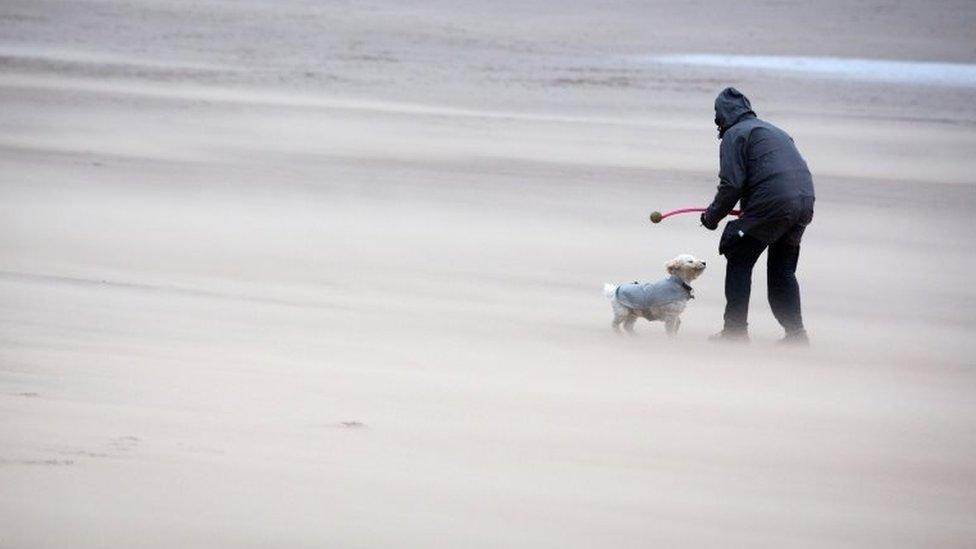
Stormy weather is likely to become more frequent, say experts
Extreme weather was likely to become more frequent, she said.
"There may also be more intense wave action during those storms. We are seeing it now and will continue to see it during the rest of this century."
Prof Murray said emissions from industry and transport were the main issue.
"It's the way we live our lives and I do wonder what our grandchildren are going to be thinking about that - and the changes they will have to make."
Ten years ago the National Trust (NT) was the first organisation to talk openly of adopting a different approach to engineering. , external
Instead of building seawalls, there would be a retreat from the sea.
Phil Dyke, the NT coast and marine officer for Wales, England and Northern Ireland, said: "What we don't want to see is a future when we sleepwalk into a concrete coast around Wales."
He said it was about rolling back infrastructure like railway lines and major roads away from at risk areas.
There is a project starting in Newgale in Pembrokeshire to realign the A487, hit by severe storms nearly two years ago.
"Let's not put new buildings in places we know that are vulnerable in the future so we're not storing up problems," said Mr Dyke.
"It's not building on flood plains and thinking about where we put key bits of infrastructure."
'Burning question'
Fairbourne in Gwynedd has more than 500 homes at risk of coastal flooding.
Gwynedd Council is committed to defending the houses for 40 years, but is beginning to talk publicly of "de-commissioning" the village should the sea rise with climate change.
There are flooding threats from three sources in Fairbourne - sea, river and groundwater.
Lisa Marshall, works with the council on the Fairbourne Moving Forward project. She said grasping what could happen in the future was the biggest challenge.
"The burning question on everyone's lips is how much is my house worth - I've had it valued and it's not worth anywhere near as I anticipated it being worth."
She said there were difficult messages and hard truths to tell people.
"There are some questions we can't answer and we may not be able to answer them satisfactorily for many years to come but on the whole the residents are grateful for us being honest with them."
Three months ago, 14 devices were installed to measure water levels underground in Fairbourne every 15 minutes.
The first readings are currently being analysed, in the type of research that could be useful elsewhere too.
- Published25 November 2015

- Published29 November 2015

- Published1 December 2015
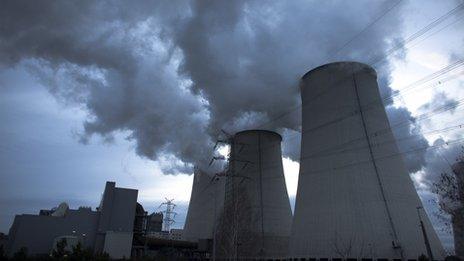
- Published1 December 2015
